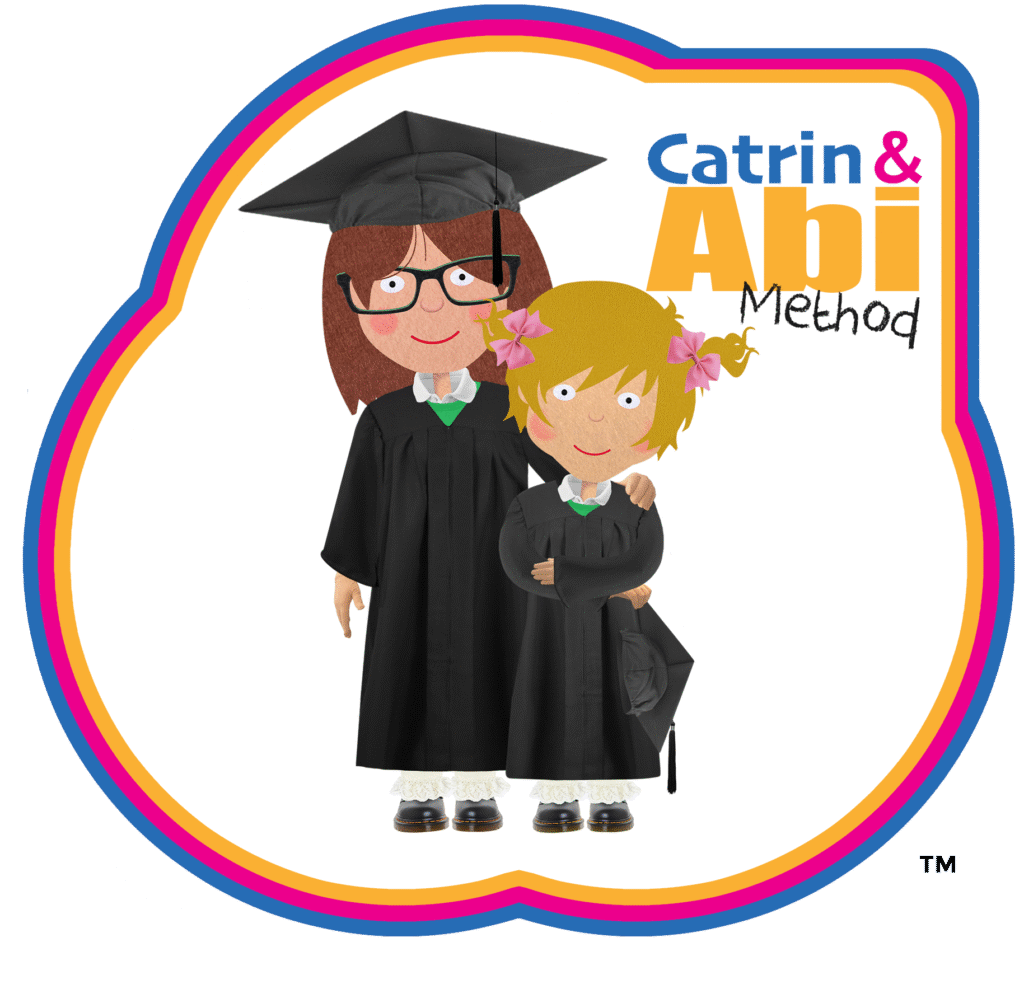The Catrin & Abi Method
BSL FOR EVERYONE
A new reason and method for teaching Sign Language in schools and home
The Catrin & Abi Method is a unique way of teaching and using BSL in the classroom and even at home to help children develop their communication skills. Learners will benefit from all the reasons research shows learning a language provides, such as:
- Improved Memory and Focus:
Learning a new language strengthens memory and attention skills, as children must learn new vocabulary and grammar rules.
- Enhanced Problem-Solving:
Language learning involves pattern recognition and critical thinking, boosting problem-solving abilities.
- Better Academic Performance:
Bilingual and multilingual children often demonstrate higher academic achievement, including better reading and writing skills.
- Stronger Foundation for Literacy:
Language skills are fundamental for developing literacy, including reading and writing comprehension.
While wider Social and Cultural Benefits include:
- Increased Cultural Awareness:
Learning a language fosters an appreciation for different cultures and perspectives, promoting empathy and understanding.
- Improved Communication Skills:
Language learning enhances communication abilities, allowing children to connect with people from diverse backgrounds.
- Enhanced Social Skills:
Learning a new language can boost confidence and social skills, as children learn to navigate new situations and interact with others.
Evidence shows that learning a new language creates future opportunities and career advantages, but for now, lets just let them be children who can learn a language for all of the above reasons and some very important other reasons that will give them the best chance to make their own decisions.
Sign Language for everyone
Catrin and Abi use BSL to speak to each other. Abi is Deaf, so she needs BSL to communicate with other people, but is this all BSL is?

Absolutely not. Catrin and Abi know better and understand that BSL can not only be a rich language for everyone to learn just like any language, but also it’s a language that can benefit other children who may not be Deaf. Someone can use sign language to support their development of core or first language speech, language, and communication (SLC).
For example, BSL can work alongside a learner’s core language to help them develop their core language skills by offering an extra layer of imprinting and simplifying understanding. Sign languages are known as Non-arbitrary languages, unlike oral languages, which are arbitrary.
An arbitrary language has no inherent or natural connection between a word’s form (sound or spelling) and its meaning, while a non-arbitrary language (or iconic language) has some form of resemblance or relationship between the form and meaning of a word.

For example:
Words like bird or dog have nothing in common with how the words bird and dog look or how the words for bird and dog sound.
However, in BSL, the sign for a bird looks like a bird tweeting, and the sign for a dog looks like a dog walking.

Most languages have non-arbitrary elements. English examples are onomatopoeia words, such as meow, cuckoo, and buzz, which represent sounds. However, English, like most other languages, is arbitrary.
Words like bird and dog, although arbitrary, are relatively simple words that most people understand quickly and more accurately than more abstract words in English. This simplicity is known as the concreteness effect. BSL, however, introduces non-arbitrary signs for more complex or abstract words that evoke the meaning of the word as part of the sign, making imprinting and retention much easier for the learner.
This non-arbitrariness and the movement and gestures in BSL make sign languages more intuitive and easier to learn. However, putting them alongside English, for example, as a teaching method can make learning their core language easier, as it allows more chance of imprinting and understanding through non-arbitrary association and muscle memory.

This method has benefits for all children, but it can be a huge benefit for children who are or have:
- Autistic or neurodiverse who may have communication development needs
- Mutism or selectively mutism
- Speech impediments such as stutters or stammers
- Late developed speech
- Oral communication anxiety
- Auditory Processing Disorder
- Verbal Apraxia
- And, of course, children who are deaf
Using sign to help learn a second language
Using this teaching method means Catrin, Abi, and other children can use sign language to help them learn other languages. Catrin and Abi live in Wales and use Welsh Sign Language (Iaith Arwyddion Cymraeg or IAC) to learn Welsh.
It helps them do this for all the reasons already mentioned but also because sign languages are unique when learning a new language. You can sign a word in BSL or IAC while saying a word in English or Welsh, meaning you can learn words in different languages simultaneously. If you say an English, Welsh or French word, for example, then there is space and time between speaking and hearing the words in a different language. Word association, for example, in sign language to the other language, is instant.
So, you can see why Catrin, Abi, and many children like doing sign language. They can learn and have fun with a new language while improving their core language.

